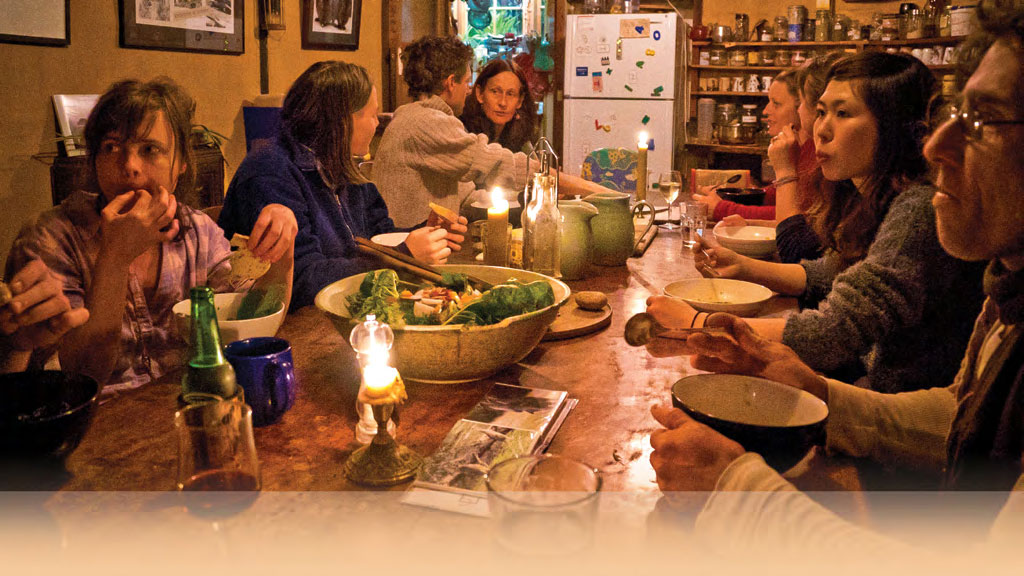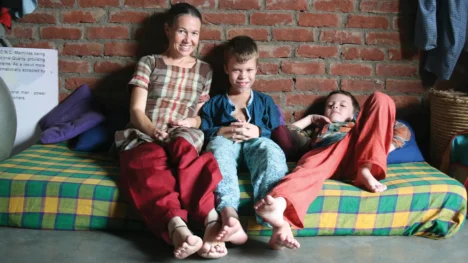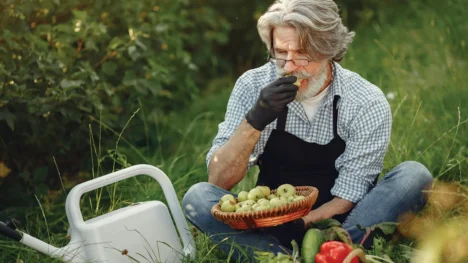
At the beginning of this year, my husband, Mike, and I decided to say goodbye to the house we were renting in Adelaide, put most of our belongings in storage and head off on a two-month adventure, exploring various intentional—planned—communities throughout the state of Victoria.
For a while we had been feeling somewhat dissatisfied with typical suburban life—the social disconnection, the financial cost and the impact on the environment. I had also been thinking about my core purpose as a follower of Christ— to love God and love others. How could I do this with greater integrity and effectiveness? Perhaps living in close proximity with others who share a common vision might be the answer.
As we hit the road we were excited to meet people who are making relationships, community and care for the earth their priority. We visited a variety of inspiring intentional communities. This reflection includes those who describe themselves as Christ-centred, but I think Commonground near Seymour also deserves a mention. I’ve also chosen to focus on the theme of sustainability, not just from an environmental perspective, but also in terms of the long-term health of a community. Each community holds a number of values and practices that enable their group to remain healthy, purposeful and sustainable.
Life Together
An essential element of the common life is living in close proximity. The members of each of these communities live within walking distance of each other. This enables them to share daily life, which deepens friendships and strengthens community. It also helps to overcome isolation and loneliness, as well as lighten the load. Tasks such as raising children, growing vegetables and cooking can all be shared.
At Commonground, where everyone lives under one roof, each adult (even if they’re a married couple) has their own bedroom to ensure they have their own personal space. This very close arrangement of living together isn’t for everyone, but I loved the sense of being a part of an extended family. There is also plenty of freedom to work off-site or have time-out when needed.
Members in each of these communities draw encouragement and strength from meeting together regularly. It might be over a meal, to study the Bible, to pray or to discuss activities and make decisions. Both incidental and intentional times of connection are important.
A significant common thread in each of these communities is that none of them exist simply for the wellbeing of their own members— they have a purpose beyond themselves. To me, this outward focus gives them integrity. I also believe it is the glue that keeps them together, especially when times get tough.
Another factor that contributes to the longevity of these intentional communities is their connection to a broader network of people in their locality who share their vision and purpose, or a parent organisation that can offer guidance and support.
Finances and ownership
Every community we visited does things a little bit differently when it comes to finances and ownership. The following two examples particularly inspired me:
The core Cornerstone members share a common purse. Each adult works part-time and pools their earnings into a common bank account from which rent and utilities are paid. This both reinforces their commitment to their life and work, and allows them the time and energy to invest in the local community.
Commonground on the other hand is a cooperative, established by founding members who pooled their resources to purchase the land. All land and buildings are owned by the collective and can’t be sold or rented out by individuals. Their commitment to this lifestyle comes from the belief that “for the sake of the planet, humans needed to learn how to live more cooperatively and to share their resources.” This radical exam- ple of living together reminds me of the first followers of Jesus who “were together and had everything in common” (Acts 2:44).
Obviously these examples contrast significantly with our typical Western way of life, with the perceived need to privately own everything. It may sound pretty challenging but I think we need to seriously reconsider our values of complete independence and self-sufficiency, as much for our own wellbeing as for the health of the planet. Living a different way can free us of financial stress as we share things such as land, housing, equipment and food, and open the door to new opportunities.
Environmental Sustainability
For Cornerstone, Urban Seed and the Cudgee households, their faith in Jesus motivates them to try to live more resourcefully and sustainably, so that the earth can continue to meet the needs of everyone. These communities and Commonground understand that local changes to lifestyle have a global impact.
We saw solar panels, water tanks and compost toilets (odourless, easy to use and even indoor), but it was the beautiful, passive solar homes in Cudgee that impressed me most. Straw-bale and mud-brick walls, north-facing windows, reclaimed doors and polished concrete and wooden floors were just some of the features. Commonground was also inspiring with its use of on-site and recycled materials.
Living in close proximity makes it easy to share equipment and less demand for manufactured products means less impact on the earth’s finite resources. Also, being able to walk to each other’s homes or the community hub reduces car usage and carbon emissions.
Each of the communities is familiar with the issue of food security— the challenge people face in gaining access to both nutritional and affordable food. We saw a community garden or vegetable plot in each location.
Conclusion
For most of us, life is very busy and stressful, and the pressure only seems to be increasing. Plus, we appear to be moving into a very unstable future, thanks to issues such as climate change, food security and economic uncertainty. Therefore, I think we have to start thinking about alternative ways of living. Hopefully, these communities have provided some inspiration.
There’s no doubt that living in intentional communities and practising interdependence can be very challenging at times. However, my overall impression from the conversations we had with our hosts is that despite the sacrifices of living together—whether it be personal space, financial gain or otherwise— the benefits and blessings are well worth it.
As I think about the places we visited and the people we met, what really stands out is the deep love and friendship we witnessed in each community. There is also a palpable sense of belonging and purpose. Those reasons alone are enough to convince me it’s time for something different.









